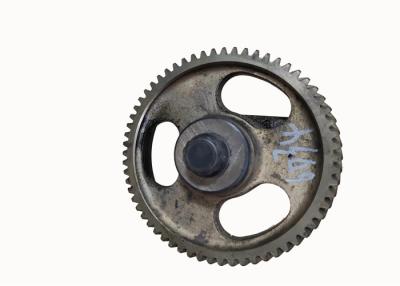




| Price | Negotiated |
| MOQ | Negotiable |
| Delivery Time | 5 - 8 work days |
| Brand | Mitsubishi |
| Place of Origin | Japan |
| Model Number | 6D34 6D31 |
| Packaging Details | Neutral Package or Fumigation |
| Payment Terms | D/P, T/T |
| Supply Ability | 10 pieces |
| Condition | Used | Engine model | 6D34 |
| Place of Origin | Japan | Packaging Details | Neutral Package or Fumigation |
| Color | Same as pictures | Excavator model | SK230 - 6E |
| Material | Steel | Model Number | 6D34 6D31 |
| Supply Ability | 10 pieces | Brand Name | Mitsubishi |
| Payment Terms | D/P, T/T | Type | Engine Parts |
| Price | Negotiated | Delivery Time | 5 - 8 work days |
| Part number | ME081737 | Application | Excavator |
6D34 Used Camshaft For Excavator SK200 - 3 SK230 - 6E ME081737
Specification
| Engine Type: Diesel | Type: Diesel Engine | |
| Application: Engineering Machinery Engine | Number of cylinders: 6 | |
| Teeth quantity: 62 | Size: Standard | |
| Type: Direct injection | Item name: Engine Camshaft | |
Description
How Camshafts Work
The
camshaft
uses
lobes
(called
cams)
that
push
against
the
valves
to
open
them
as
the
camshaft
rotates;
springs
on
the
valves
return
them
to
their
closed
position.
This
is
a
critical
job,
and
can
have
a
great
impact
on
an
engine's
performance
at
different
speeds.
Camshaft
Basics
The
key
parts
of
any
camshaft
are
the
lobes.
As
the
camshaft
spins,
the
lobes
open
and
close
the
intake
and
exhaust
valves
in
time
with
the
motion
of
the
piston.
It
turns
out
that
there
is
a
direct
relationship
between
the
shape
of
the
cam
lobes
and
the
way
the
engine
performs
in
different
speed
ranges.
To understand why this is the case, imagine that we are running an engine extremely slowly -- at just 10 or 20 revolutions per minute (RPM) -- so that it takes the piston a couple of seconds to complete a cycle. It would be impossible to actually run a normal engine this slowly, but let's imagine that we could. At this slow speed, we would want cam lobes shaped so that:
Just as the piston starts moving downward in the intake stroke, the intake valve would open. The intake valve would close right as the piston bottoms out.
The
exhaust
valve
would
open
right
as
the
piston
bottoms
out
at
the
end
of
the
combustion
stroke,
and
would
close
as
the
piston
completes
the
exhaust
stroke.
This setup would work really well for the engine as long as it ran at this very slow speed. But what happens if you increase the RPM? Let's find out.
When you increase the RPM, the 10 to 20 RPM configuration for the camshaft does not work well. If the engine is running at 4,000 RPM, the valves are opening and closing 2,000 times every minute, or 33 times every second. At these speeds, the piston is moving very quickly, so the air/fuel mixture rushing into the cylinder is moving very quickly as well.

